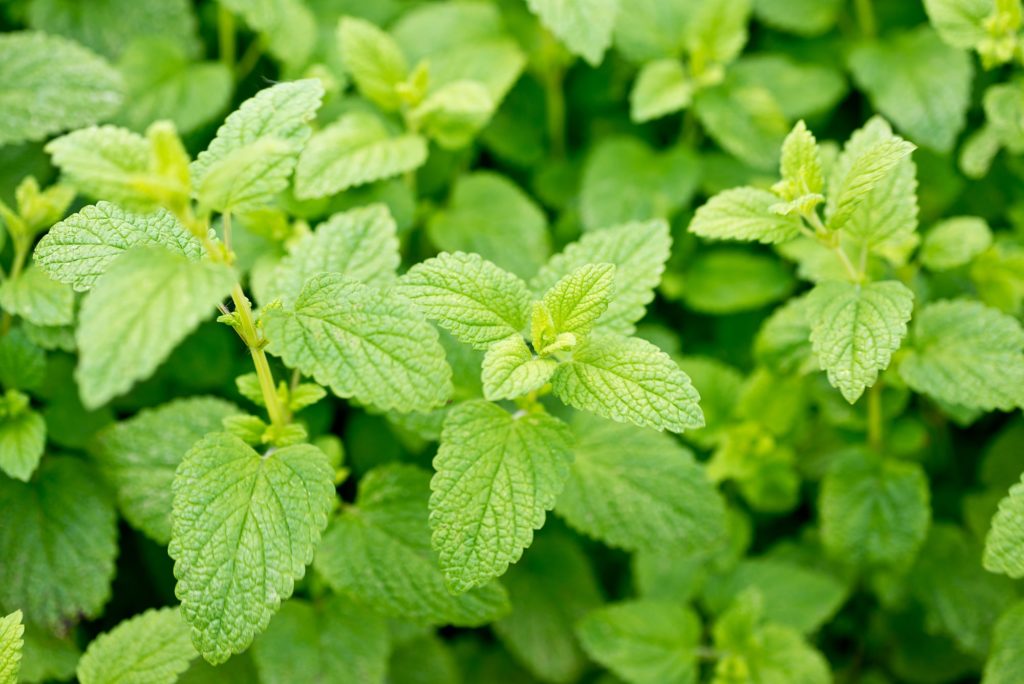6 Simple Herbs for Health and How to Use Them
Have you ever considered that some of the herbs that you’re already growing could be useful to you for health and even medicinal remedies? When I started diving into this, I was partly overwhelmed and partly excited at the whole new world opening up for me!
I started my herbal journey two years ago. There’s no better time than fall to dive into a medicinal herb garden, but where do we even start?
On this episode of the Beginner’s Garden Podcast, Carolyn from the Homesteading Family dives deeper into how she uses six simple herbs for her family — several of which you probably have in your garden right now. Listen below, or continue reading for the highlights of our conversation.
Keep in mind, Carolyn nor I are not medical professionals. While most herbs are perfectly safe, it’s always best to check with your doctor before using them for medicinal purposes, especially if you’re taking medication. Links below may also contain affiliate links.
Lemon Balm
Lemon Balm is one of the easiest herbs to grow, as simple as growing mint, yet it doesn’t spread as much and requires less water. It’s also a perennial in most zones so it will come back year after year.
Lemon Balm is one of the very best herbs for stress relief. We could honestly wrap up this paragraph with that! But, it’s also great for fevers and headaches, and because of its antiviral properties, it’s great for cold sores and shingles as well.
One of our favorite ways to take Lemon Balm is to brew it into an herbal tea. For topical use (like for a cold sore), an herbal salve or oil would be more appropriate.
*Links below may contain affiliate links, which means if you click through and make a purchase, this blog will earn a commission at no extra cost to you.
Thyme
Yes, the very same thyme you eat on your chicken is one of the best medicinal herbs you can use! It has many antibacterial and antiviral properties. Perfect for anything respiratory, like cold and flu season, it’s no coincidence that thyme-infused chicken broth has been a go to for moms for years.
You can use thyme in an herbal tea, as a tincture, or one of my favorites — honey-thyme syrup! But to keep it simple when you have a cough or cold, a mix of thyme, lemon, and honey tea will have you feeling better by the end of the cup.
Peppermint
One of the easiest herbs to grow, peppermint is a must-have. Because peppermint tends to spread, you may want to grow it in a box or container.
Peppermint is good for stomachaches, headaches, throat problems, and more. Peppermint is also wonderful for flavor. It’s not a secret that some herbs simply don’t taste good. So, being able to mask the taste of them to get to their healing properties is important. Enter peppermint!
Peppermint is so versatile. My favorite way to use it is to simply brew a tablespoon into 8 ounces of boiling water for a quick, refreshing tea.
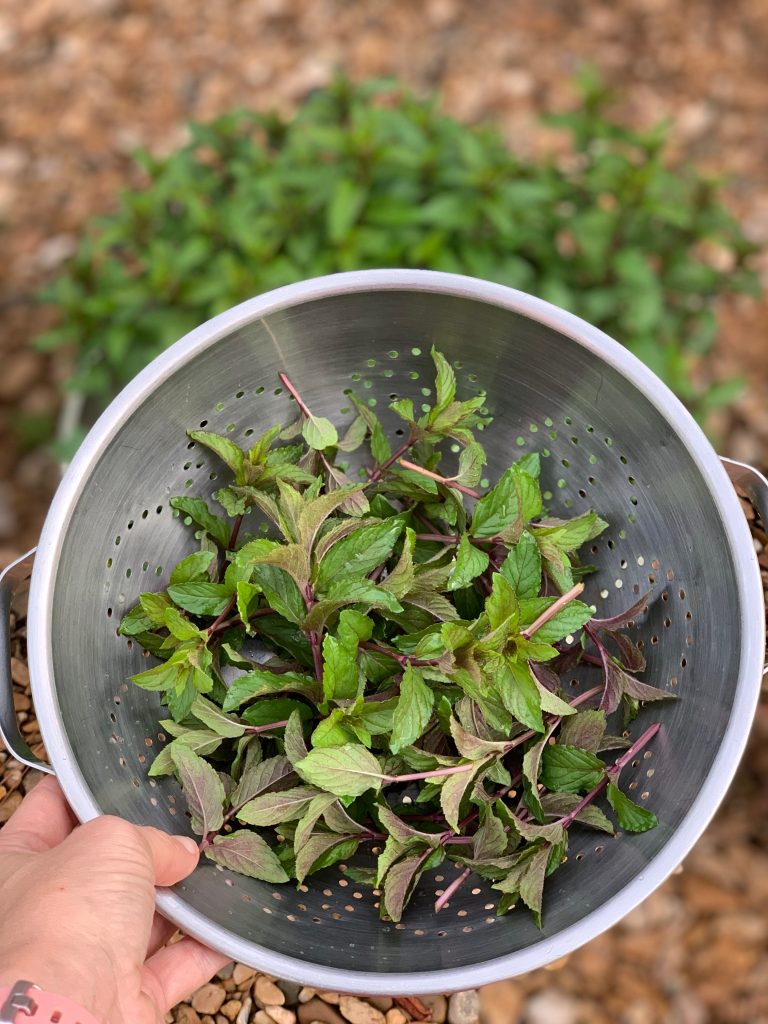
Sage
More than the main ingredient in your Thanksgiving stuffing, sage is a powerhouse herb! It’s great for cuts and irritations of the mouth or upset stomach, but to me its greatest use is for sore throats.
For sage, we use an infusion, which is a strong cup of tea, and we use it as a gargle or a mouthwash for mouth sores. Sage is a main ingredient in my go-to cold care tea.
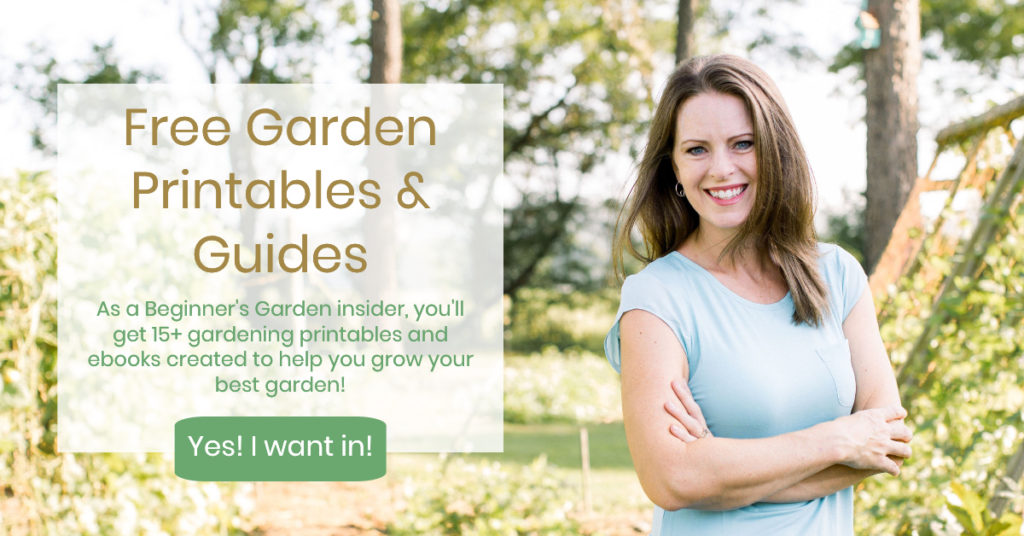
Calendula
Calendula is a beautiful, edible flower, but a powerhouse in the medicinal herb department. It is a go-to for anything related to the skin! Any rash, sores, wounds, irriations, calendula is what you want to reach for.
Calendula is also good for moving lymph around. If you find yourself with a sore throat, swollen lymph glands, etc., calendula is the herb of choice.
We infuse calendula flowers into an herbal oil and then make an herbal salve. I even use calendula-infused olive oil for my daily morning facial moisturizer.
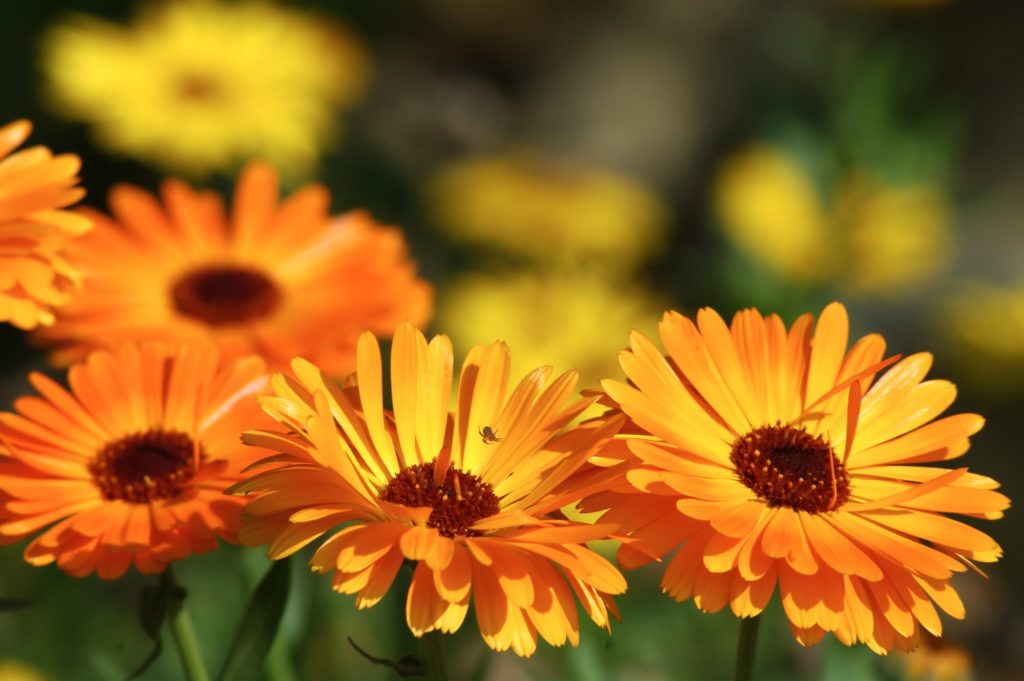
Mallow/Hollyhock
The last herb is the Mallow or its cousin, the Hollyhock. They are interchangeable with one another, easy to grow, and beautiful, which is an added bonus for the eye.
Mallow and Hollyhock are soothing. If it’s the intestines, tummy, skin, scalp, really anything on the body, mallow will help.
The very best way to use mallow is make a very strong cup of tea out of it and then let it brew until it’s cold and then drink it. It’s also a main ingredient in my favorite cold care tea, along with sage.
When are Herbs and Flowers Best Harvested for Highest Quality?
If we are talking about the leaves of an herb, the best time to harvest is before it flowers or fruits. You’ll also want to harvest once the dew has dried in the morning.
If it’s a flower you’re harvesting, you’re going to want to harvest it just as it’s almost fully opened. When harvesting a fruit, you’ll want to pick it right when it’s ripe but before seeing signs of decay.
When harvesting a root (like in the case of mallow or echinacea, which we didn’t discuss here), you’ll want to wait until the fall when the foliage has started to die back. This is usually when the leaves have started to turn brown. You don’t have to wait until they are completely dead.
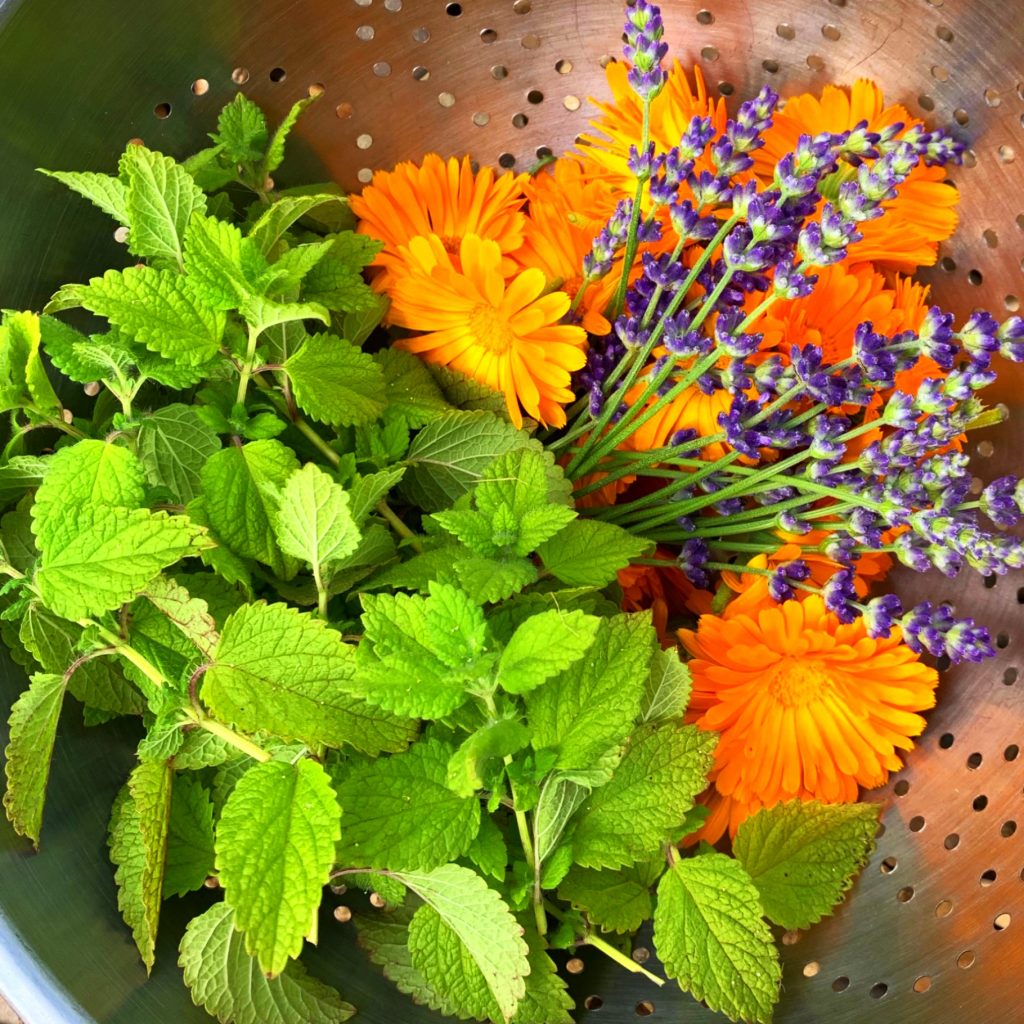
Best Method for Using Herbs
How to best use herbs for medicinal purposes is one of the biggest questions beginners ask. There are so many possibilities and it’s not as simple as taking a pill. Still, the answer is simpler than we think at first.
A major rule of thumb for medicinal herbs is that you want to get the herb directly on the tissue affected as much as possible. Knowing this, you’ll be able to decide which is the best method to use for whatever is ailing you. Here are some examples:
For skin irritations, rashes, or cuts, you’ll want the herbs applied directly on the skin perhaps via an oil or salve. For a sore throat or mouth ailment, you’ll want the herbs going down the throat or swished around in the mouth via a tincture, tea, or gargle.
If you’re dealing with a respiratory issue, an herbal steam would be best.
What’s a Tincture?
A tincture when you add alcohol (usually vodka) to herbs in order to extract and preserve the properties of the herbs. Most tinctures need to “sit” for 4-6 weeks before the herbs are strained out. A tincture is a concentrated version of the herbs, so usually dosage is very small — mere drops for children or perhaps a teaspoon for adults (depending on the tincture).
While the final product ends up being a very minimal amount of alcohol because of the small dosage, there are alternatives, such as vinegar or food-grade glycerin. Neither option does as good a job as pulling out the properties of the herbs, but they are definitely options if you are not comfortable with the alcohol or are unable to.
One option for children is to use an equal mix of vodka and glycerine when making a tincture. The alcohol extracts the herbal properties best, but the glycerine not only cuts the alcohol but also adds a sweet flavor, making the tincture more palatable.

What’s the Proper Way to Make an Herbal Tea?
The proper way to ensure that you get the adequate amount of medicinal herbs in your tea is to first make sure you are getting enough of the dried herbs in your cup to begin with. You’ll want 1 tablespoon of dried herbs (or 2-3 tbsp fresh) per cup of water.
Then, you’ll want to add the boiling water and cover the cup with a saucer or lid. (This is my favorite tea mug that comes with a strainer and cover.) The steam that tries to escape that cup is carrying off some of the most important properties of your herbs. You’ll also want to let it steep for at least 15 minutes before drinking it.
Keep in mind, drying herbs is just a form of preservation and it’s not necessary for your teas. You can use fresh herbs in your tea.
I really do think fall is the perfect time to delve into medicinal herbs. We hope you’ve been inspired to use the herbs you’re already growing in a medicinal way, or start adding new ones to the fall garden!
To learn more about specific herbs and their uses, a great place to start is the book Medicinal Herbs.
To learn more about specific ways to start incorporating herbs into your life, I highly recommend Carolyn’s FREE training: Healthy Healing at Home I’ve gone through this training and have put Carolyn’s protocols into practice in my own life and it has made a huge difference in my family’s health.
Do you get overwhelmed with garden planning?

Subscribe here for my best tips to plan your garden in just 7 days -- all for FREE.
Plus, I'll send you my "In the Garden E-mail" on Fridays, periodic updates on garden resources relevant to you, and you'll receive access to my entire bank of free garden downloads!
You are also agreeing to our privacy policy.

